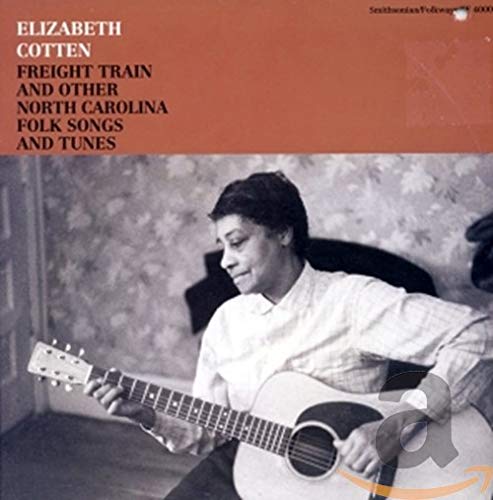Melodies are fascinating. Probably the most mysterious – and often under-explored, by us writers – aspect of songwriting. Even though no one’s ever been able to come up with a ‘formula’ for writing a good one, it’s interesting how certain characteristics, some of which I’ve outlined here, seem to emerge in great melodies of all eras, styles, and genres.
Elizabeth Cotten, who died in 1987 at age 94, was a unique blues singer/songwriter/guitarist. After performing in her youth, she didn’t play and sing for many years until she was rediscovered late in life by Pete Seeger and his family. But that’s another story…
I praise her today because her most famous song, the blues standard ‘Freight Train’, on the surface fairly straightforward, illustrates a few principles, basic but always worth remembering, that you’ll find in most good melodies of any genre. (Listen below.)
One is how it handles being an 8 bar melody, consisting of four phrases of 2 bars each.
8 bar sections split into 4 phrases are probably the most common format in all of traditional popular song. Though you don’t hear this kind of 8 bar melody as much in new songs these days, there’s a reason it was (and still is, to lesser extent) so popular – when done well, it’s very satisfying.
(This song is in the ‘AAA’ form. So the chords and melody stay more or less the same throughout, though the words change.)
In classic style, the first phrase of ‘Freight Train’ states a theme. The second phrase repeats the theme with a slight variation.
In this kind of melody the third phrase is usually where the biggest change/expansion happens, and so it is here. Then the 4th phrase resolves the musical thought, brings it home.
This goes hand in hand with another principle – even though it’s a “simple blues melody”, it has enough melodic motion to keep it moving, while still sitting comfortably in its genre. It doesn’t just bounce around between 3 or 4 notes. It’s a nice combination of scalar motion and repeated notes, plus a few jumps to keep things lively.
Though it looks like she’s playing it in the key of ‘C’, with the guitar tuned down (it’s hard for me to tell because she plays upside-down!), for simplicity’s sake I’m rendering it here in ‘A’. The chords:
||: A | E | E | A | C#7 | D | A/E E | A :||
(The ‘E’ chord in bar 7 comes on beat 4.)
I don’t have musical notation here, so I’ll give you the melody notes as they roughly correspond to the bars:
|| E C# B A | G# /\ E D |
| E D C# B | A /\ E C# |
| C# C# C# B | A F# A A B |
| C# A F# | A B A ||
( /\ stands for a jump up.)
Simple and elegant, making for a memorable melody, and a memorable song. And don’t sleep on her amazing finger-picking!
(Here are some more thoughts on 8 bar melody sections.)
Let me know your thoughts in the Comments section below:

And please share on facebook etc. by clicking the tabs beneath the video –
